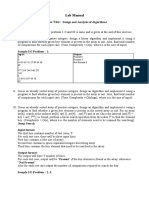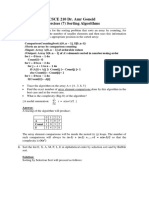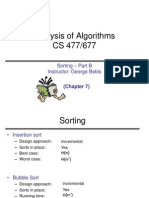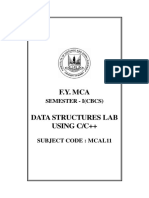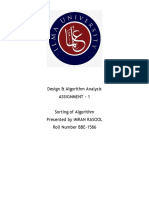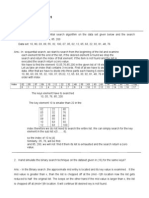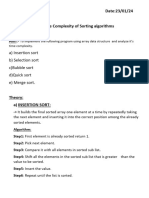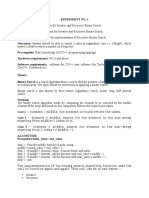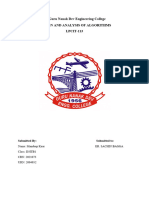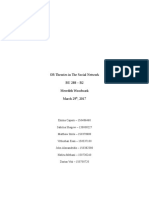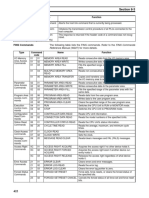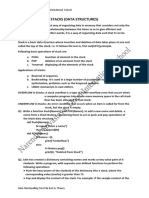0% found this document useful (0 votes)
18 views2 pagesAssignment - 1
The document outlines a practice lab focused on algorithms and problem-solving, specifically sorting techniques. It includes tasks such as implementing various sorting algorithms, analyzing their complexities, and modifying sorting functions to handle different orders. Additionally, it covers merging sorted arrays and sorting elements based on their positions in the array.
Uploaded by
shauryagoyal1404Copyright
© © All Rights Reserved
We take content rights seriously. If you suspect this is your content, claim it here.
Available Formats
Download as PDF, TXT or read online on Scribd
0% found this document useful (0 votes)
18 views2 pagesAssignment - 1
The document outlines a practice lab focused on algorithms and problem-solving, specifically sorting techniques. It includes tasks such as implementing various sorting algorithms, analyzing their complexities, and modifying sorting functions to handle different orders. Additionally, it covers merging sorted arrays and sorting elements based on their positions in the array.
Uploaded by
shauryagoyal1404Copyright
© © All Rights Reserved
We take content rights seriously. If you suspect this is your content, claim it here.
Available Formats
Download as PDF, TXT or read online on Scribd
/ 2



